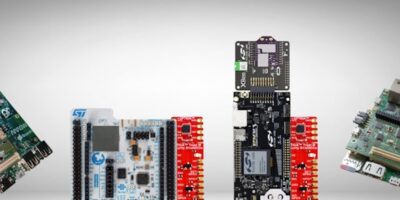Security starter kits enable IoT device companies to build and deliver secure connected devices, says Arrow Electronics.
The Security Starter Kit suite integrates wireless and single board computers (SBCs) with Infineon Technologies’ Optiga TPM2.0 and Optiga Trust M security devices.
According to Arrow, the kits enable customers to understand, navigate, and implement emerging security standards with developer kits that provide open source reference solutions from edge to cloud.
Companies which want to add security to their end product can use the kit for a straightforward security implementation path with root of trust capabilities. In addition, connecting to cloud services is simplified with AWS IoT Greengrass and AWS IoT Core integrations, says Arrow.
“Over the past five years, we’ve seen an exponential growth in connected devices that sense, monitor and control things from smart home/building solutions to manufacturing equipment and everything in between, yet it is conservatively estimated that 70 per cent of these devices have little or no security implemented in them,” said Arrow Electronics’ vice president of IoT global solutions Aiden Mitchell.
The Security Starter Kit includes ready-to-use examples designed to help developers implement vital security features in end node and gateway products, he added.
Arrow has worked closely with technology suppliers to create kits that build on existing evaluation kits and SBCs, to implement features that directly map to current security standards, including ETSI TS 103 645, NISTIR 8259A and ISO 27001.
The Security Starter Kit series is a set of low power, wireless evaluation kits based on Silicon Labs’ Giant Gecko11 and LTE Cat M and the STMicroelectronics STM32WB55 Bluetooth Low Energy Nucleo Pack evaluation kits.
There are also two 96board-compliant SBCs, based on the ST STM32MP157 and NXP i.MX 8X processors, to perform more robust gateway functions. The end node and gateway solutions are designed to support the rapid evaluation and implementation of the built-in security features supported by the Optiga TPM2.0 and Optiga Trust M.
The kits were created using FreeRTOS or Yocto Linux and work with AWS IoT Core and/or AWS IoT Greengrass. Customers can connect to the cloud and begin software evaluation immediately. Users can also develop their own implementations if they prefer to use other cloud options.
“End-to-end security is key. Partnering with Arrow allowed Infineon to offer customers this simplicity in the form of an easy-to-use reference solution based on our Optiga security chip family,” said Juergen Rebel, senior vice president and general manager Embedded Security at Infineon Technologies. “
“With the boom in connected devices and associated hacking/cloning threats, security is a real concern and a de-facto feature that customers are looking for when it comes to selecting a technology platform,” said Hakim Jaafar, STM32 wireless marketing director, STMicroelectronics. “To speed up product development, all STM32 wireless products come with a secure HW IP and offer services like anti-hacking and anti-cloning, which frees customers to focus on their core application development.”







